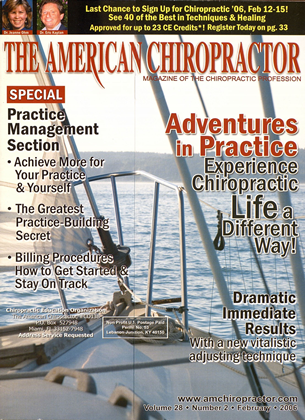History and Presenting Symptoms This 41-year-old male patient is a runner, who reports the recent onset of pain at the front of his right knee. He describes the pain as an aching that starts after he's done about two miles, and persists for about three hours after he's completed his run. His knee is not stiff, but he also describes chronic mild to moderate pain in his lower back. He has had no significant injuries to his knees or back, in spite of having run for about 14 years. He recently increased his mileage and specdwork. He rates his current level of right knee pain as getting up to about 55mm on a 100 mm Visual Analog Scale. Exam Findings Vitals. This athletic male weighs 161 lbs. which, at 5" 10", results in a BMI of 23—he is not overweight and appears to be quite fit. In addition to his running, he works out regularly and is in very good condition generally. He is a non-smoker, and his blood pressure is within the normal range (116/68 mmHg), while his resting pulse rate is low, but normal, for a runner (64 bpm). Posture and gait. Standing postural evaluation finds generally good alignment throughout his pelvis and spine, with no lateral lists or spinal curvatures, and level iliac crests. Gait evaluation identifies a significant tendency to pronate, which is especially noticeable on the right. The right calcaneus rolls inward when running up a 4° incline, and his right foot flares out. Chiropractic evaluation. Motion palpation identifies a limitation in scgmcntal motion at the right SI joint, with moderate tenderness to palpation. Neurologic testing is negative. Primary complaint. Examination of the right knee finds no ligament instability and no evidence of a patellar tracking problem. All knee ranges of motion are full and pain free. Palpation over the inferior pole of the right patella elicits substantial pain and discomfort. Manual muscle testing finds evidence of pain-mediated muscle weakness in the knee extensor muscles. Imaging Weight-bearing X-rays of the right knee find normal joint space and alignment, with no evidence of osteoarthrosis or other structural pathology. Clinical Impression Patellar (tibial) tendinitis associated with recent increase in running mileage and intensity. This is exacerbated by recent overuse and poor biomechanics of the foot and ankle. There is only mild secondary spinal involvement. Treatment Plan Adjustments. Specific, corrective adjustments for the right sacroiliac joint were performed with substantial immediate relief. Manipulation of the right knee into internal rotation decreased the external rotation associated with the chronic hyperpronation. Stabilization. Custom-made, stabilizing orthotics were provided to support the arches and decrease the rotational stress on the knees. These orthotics included substantial shock-absorbing materials in consideration of his average 70 miles of running each week. Rehabilitation. This patient was in good condition, generally, and he did not require any specific corrective exercises. Response to Care The patient easily tolerated the sacroiliac and knee adjustments and reported a rapid decrease in his knee symptoms. Once he began wearing his stabilizing orthotics regularly, he noted a substantial decrease in knee irritation with use, and a smoother stride during high-intensity workouts. Within two weeks of receiving his orthotics. he reported that he was running his full workout routines (including hill runs), with no knee pain or limitation. He was released to a self-directed maintenance program after a total of eight treatment sessions over two months. Discussion With no history of injury to his leg, knee, or pelvis, this patient required a close evaluation to identify his underlying biomechanical imbalances. Sometimes it's only when someone places unusual stress on a mild biomechanical imbalance that it becomes problematic. In this case, the increase in miles and running intensity (including hill work) brought out the pronation and biomechanical asymmetry in the foot and ankle that had previously been asymptomatic. Dr. John J. Danchik is the seventh inductee to the American Chiropractic Association Sports Hall of Fame. He is the current chairperson of the United States Olympic Committee s Chiropractic Selection Program and lectures extensively in the United States and abroad on current trends in sports chiropractic and rehabilitation. Dr. Danchik is an associate editor of the Journal of the Ncuromusculoskcletal System. He can be reached by e-mail at [email protected].
 View Full Issue
View Full Issue






